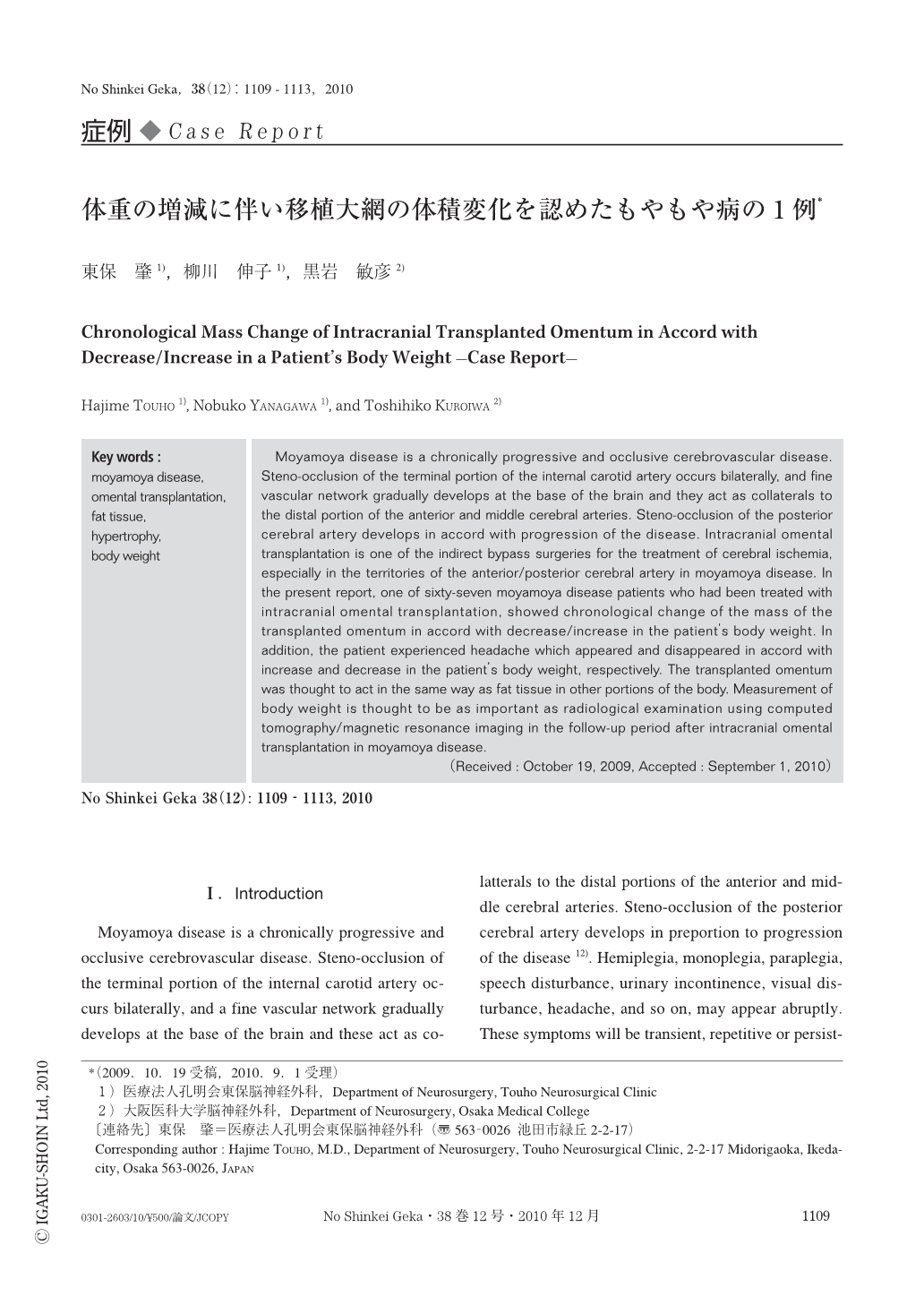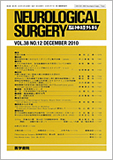Japanese
English
- 有料閲覧
- Abstract 文献概要
- 1ページ目 Look Inside
- 参考文献 Reference
もやもや病の間接吻合術のなかで大網移植術は特に前大脳動脈あるいは後大脳動脈領域の虚血発作に対して施行されている。
24年間で67件の大網移植術を施行したが,そのうち1例で体重の増加に伴い移植した大網の体積が増加し頭痛を認めた.食事摂取量の制限による体重減少に伴い大網体積も減少し頭痛の消失を認めた.もやもや病に対する大網移植術後,患者の体重管理にも留意する必要が生じることもあり得ると考えられた.
Moyamoya disease is a chronically progressive and occlusive cerebrovascular disease. Steno-occlusion of the terminal portion of the internal carotid artery occurs bilaterally,and fine vascular network gradually develops at the base of the brain and they act as collaterals to the distal portion of the anterior and middle cerebral arteries. Steno-occlusion of the posterior cerebral artery develops in accord with progression of the disease. Intracranial omental transplantation is one of the indirect bypass surgeries for the treatment of cerebral ischemia,especially in the territories of the anterior/posterior cerebral artery in moyamoya disease. In the present report,one of sixty-seven moyamoya disease patients who had been treated with intracranial omental transplantation,showed chronological change of the mass of the transplanted omentum in accord with decrease/increase in the patient's body weight. In addition,the patient experienced headache which appeared and disappeared in accord with increase and decrease in the patient's body weight,respectively. The transplanted omentum was thought to act in the same way as fat tissue in other portions of the body. Measurement of body weight is thought to be as important as radiological examination using computed tomography/magnetic resonance imaging in the follow-up period after intracranial omental transplantation in moyamoya disease.

Copyright © 2010, Igaku-Shoin Ltd. All rights reserved.


